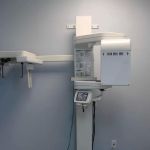- normal-post-extraction-pain-vs-warning-signs - Normal Post-Extraction Pain vs. Warning Signs
- inflammation-and-trauma-during-the-procedure - Inflammation and Trauma During the Procedure
- dry-socket-one-of-the-most-common-causes - Dry Socket: One of the Most Common Causes
- infection-after-tooth-extraction-and-its-symptoms - Infection After Tooth Extraction and Its Symptoms
- nerve-irritation-and-referred-pain-in-the-jaw - Nerve Irritation and Referred Pain in the Jaw
- personal-case-study-how-delayed-care-caused-complications - Personal Case Study: How Delayed Care Caused Complications
1. Normal Post-Extraction Pain vs. Warning Signs
It's completely normal to experience some degree of jaw pain and swelling after a tooth extraction. After all, removing a tooth—especially a molar or wisdom tooth—requires force and causes trauma to the surrounding bone and soft tissue. Most patients report mild discomfort, swelling, and limited jaw mobility within the first 48 to 72 hours. But how do you know when that pain and swelling become something more serious?
A little soreness, slight swelling, and tenderness are expected. These usually begin to improve after the third day. However, if your jaw pain increases over time instead of decreasing, or if the swelling becomes hard, hot, or spreads to your neck or cheek, it could be a sign of infection or another complication.
At Dentistry Toothtruth, we often guide patients through understanding the difference between normal healing and abnormal symptoms. The goal is to empower patients to know when to wait it out and when to seek help.
2. Inflammation and Trauma During the Procedure
One of the most common causes of jaw pain and swelling after tooth extraction is the natural inflammatory response triggered by surgical trauma. Even a routine extraction places stress on the tissues surrounding the tooth socket. If bone had to be drilled or if multiple teeth were removed, the trauma level is higher—leading to greater inflammation.
During extractions, your dentist or oral surgeon may apply pressure to the jawbone. This pressure can stretch ligaments and muscles, especially in cases where impacted or deeply rooted teeth are involved. The body’s natural healing response brings white blood cells to the site, resulting in swelling, redness, and sensitivity.
Applying cold compresses in the first 24 hours helps control inflammation. Painkillers like ibuprofen are also recommended because they reduce both pain and inflammation. However, persistent swelling beyond five days could point to a secondary issue, like infection or a hematoma under the gum.
3. Dry Socket: One of the Most Common Causes
Among all the causes of jaw pain after a tooth extraction, dry socket—medically known as alveolar osteitis—is one of the most painful. It occurs when the blood clot that normally forms in the empty socket either fails to form or gets dislodged prematurely, exposing the bone and nerve endings.
Patients with dry socket often describe the pain as sharp, deep, and radiating to the ear or jaw joint. The condition usually sets in 2–5 days after extraction and may be accompanied by a foul smell or bad taste in the mouth. Unlike typical post-extraction discomfort, this pain often worsens over time rather than improving.
Dry socket is more common in smokers, those who use straws, and individuals who fail to follow aftercare instructions. Treatment involves gently flushing the socket and placing a medicated dressing to soothe the pain. If you suspect dry socket, contact a dental professional immediately—delaying care only increases discomfort.
4. Infection After Tooth Extraction and Its Symptoms
Another serious cause of jaw pain and swelling after a tooth extraction is infection. While rare with proper care, infections can develop if bacteria enter the socket or if the wound fails to close properly. Indicators of infection include:
- Persistent or worsening swelling after day three
- Pus discharge from the extraction site
- Fever or chills
- Bad breath or unusual taste
- Difficulty opening the jaw (trismus)
Infections require prompt antibiotic treatment to prevent the spread of bacteria to surrounding tissues or even the bloodstream. In severe cases, untreated infections can lead to an abscess, osteomyelitis (bone infection), or cellulitis.
Patients should maintain excellent oral hygiene and follow post-op instructions. This includes avoiding harsh rinses, smoking, and touching the extraction site with the tongue or fingers. Dentistry Toothtruth provides step-by-step post-op guides to help patients avoid these complications altogether.
5. Nerve Irritation and Referred Pain in the Jaw
In some cases, jaw pain following an extraction isn't due to infection or dry socket, but rather nerve involvement. The lower third molars (wisdom teeth) are especially close to the inferior alveolar nerve, which supplies sensation to the lower jaw. Even if the nerve isn’t directly damaged, inflammation near the nerve can cause prolonged pain, tingling, or numbness.
This nerve-related pain may present as:
- A dull ache in the jawbone
- Tingling or numbness in the chin or lower lip
- Increased pain when chewing or speaking
Referred pain—where discomfort is felt in areas away from the extraction site—is also possible. Some patients report earaches, headaches, or neck stiffness, which may not seem related at first. A thorough evaluation by a dental professional is essential to rule out neuralgia or referred muscular pain.
At Dentistry Toothtruth, we emphasize the importance of early evaluation in persistent pain cases. Nerve-related issues don’t always need surgery but often require time, medication, and close monitoring.
6. Personal Case Study: How Delayed Care Caused Complications
Consider the experience of Alex M., a 29-year-old from Denver who had his lower wisdom teeth extracted. Initially, his recovery seemed normal—until day four when swelling increased and sharp jaw pain made it hard to sleep. Thinking it was “just part of healing,” he waited two more days before seeing a dentist.
By then, the swelling had spread to his cheek and neck, and an abscess had formed. He needed incision and drainage, antibiotics, and an extended recovery period. Alex later admitted, “I wish I had gone in sooner. The pain was unbearable, and I thought I could just push through.”
His story isn’t uncommon. Post-extraction complications can often be avoided or minimized with timely attention. No question is too small when it comes to your oral health. If something feels off, get it checked. The peace of mind alone is worth it.
If you're unsure about your symptoms, or if you want expert advice on what’s normal and what’s not after a dental procedure, explore our patient education resources at Dentistry Toothtruth. We’re here to make oral health easier to understand—and easier to live with.







 Higley Park Dental4.0 (563 review)
Higley Park Dental4.0 (563 review) Uptown Dental4.0 (73 review)
Uptown Dental4.0 (73 review) Gardena Dental Care4.0 (416 review)
Gardena Dental Care4.0 (416 review) TwinCare Dental3.0 (94 review)
TwinCare Dental3.0 (94 review) The Heights Dental Gallery Dr. Dimple Tejani4.0 (298 review)
The Heights Dental Gallery Dr. Dimple Tejani4.0 (298 review) Contemporary Dental Implant Centre4.0 (13 review)
Contemporary Dental Implant Centre4.0 (13 review) The Importance of Oral Health Education During Pregnancy for a Healthy Pregnancy
The Importance of Oral Health Education During Pregnancy for a Healthy Pregnancy Best Tips for Brushing Your Teeth Properly for Healthy Gums: Essential Techniques for Oral Health
Best Tips for Brushing Your Teeth Properly for Healthy Gums: Essential Techniques for Oral Health Why Skipping Dental Checkups Can Lead to Bigger Oral Health Problems
Why Skipping Dental Checkups Can Lead to Bigger Oral Health Problems Advantages of Porcelain Dental Restorations
Advantages of Porcelain Dental Restorations How Can Diabetes Cause Tooth and Gum Problems? Preventing and Managing Oral Health Issues
How Can Diabetes Cause Tooth and Gum Problems? Preventing and Managing Oral Health Issues Healthy Habits for Promoting Good Oral Health and Hygiene: Tips for a Healthy Smile
Healthy Habits for Promoting Good Oral Health and Hygiene: Tips for a Healthy Smile